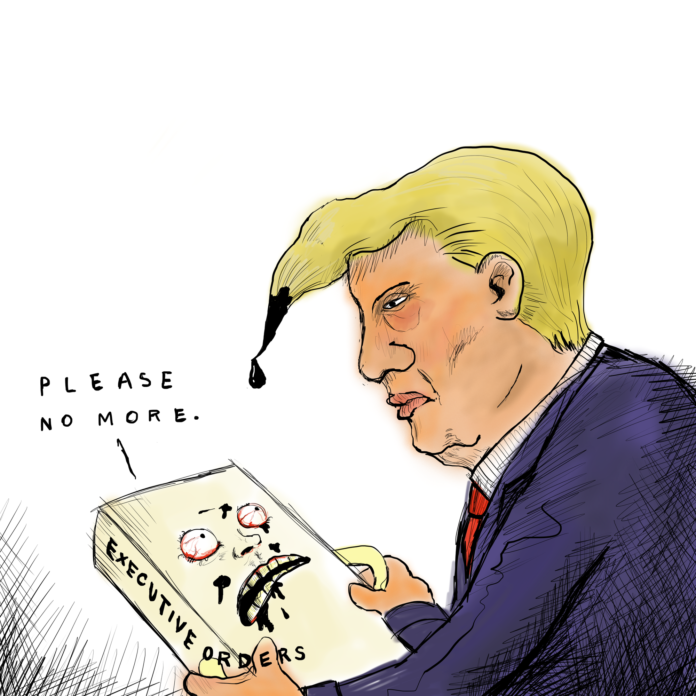Well into the his third week in office, President Donald Trump and his administration have been in a continual state of action. It turns out that his inauguration speech, in which he reiterated multiple campaign promises, has been a pretty accurate roadmap for what policies would take precedence during his first weeks in office. With 22 executive actions under his belt, the president is indeed testing the waters of executive reach. For those who disagree with the administration, the pace and scope of decisions being made is alarming. But voters who agree with the changes should also be wary.
To be as concise as possible, executive actions are not directly synonymous with executive orders. An executive action can fall into three categories: executive order, presidential memoranda and proclamation.
Executive orders and presidential memorandums are most similar in that they both dictate action. The clear difference between the two is that an executive order must be registered under the the Federal Registration, provides more concise enforcement guidelines and must cite the president’s power to enact it. Memorandums are not required to do any of these and while they have the potential to do the same job as an order, they do not carry as much legal weight. Proclamations are the most distinct because their function is largely commemorative. Breaking the administration’s actions down, 12 have been presidential memorandums, eight were executive orders and two were proclamations.
While the president’s proclamation making February American Heart Month was unlikely to cause offense, the majority of the administration’s measures have been controversial in nature. Mostly because of the major issues decided using executive orders and presidential memorandums, of which we already established, practically do the same thing.
The executive order issued on Jan. 27, for example, severely stifled U.S. entry of peoples from Syria, Iran, Sudan, Somalia, Libya, Yemen and Iraq. According to the order, the measure was enacted to “ensure that those admitted to this country do not bear hostile attitudes toward it and its founding principles.” The ban has since received backlash on allegations that it targets Muslims and is unconstitutional. A federal judge temporarily blocked this order on Friday and an appeal on behalf of the administration has since been filed.
Though pushback between branches of government is not unique to the Trump administration, the series of mandates sent out by the presidency is worrisome due to their consecutive timing and sweeping implications. Less than three weeks in office is hardly enough time to get a comprehensive look at the issues at stake with each executive action.
There is a certain level of consideration for the country’s governance system that must be upheld when an administration decides to use its executive power. The executive branch was not intended to be a quasi-legislative branch of government and much less one that sees itself in opposition to another.
President Trump should consider slowing down the pace at which he seeks to fulfill campaign promises. The legislative branch must be allowed to pursue laws deemed necessary and the judicial branch free to determine constitutionality. Upholding that part of American tradition is preserving democratic freedom.
Winning an election is not equivalent to down-ballot approval of all the policies proposed during the campaign trail. And though not all executive actions may lead to tangible change, actions often speak louder than words. Donald Trump is no longer a Republican presidential candidate, but is a civil servant of the people who did — and the many that did not — vote him into office. Likewise, much more caution should be taken every time President Trump picks up his pen.





